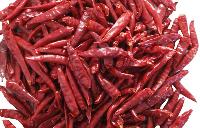
Wonder Hot Red Chilli
Hot Red Chilies are popular over the globe due to its unique feature of long size, thick skin and low heat value. Wonder hot is widely used for making red chili powder because the yield of the powder is very high and the color is bright red which attract the consumers at first sight. Wonder Hot chilies are mostly grown in the fertile lands of Warangal which is located in Andhra Pradesh. Botanical name of Wonder Hot Red Chilies is Capsicum annum L, Capsicum frutescent L. and the family name is Solanaceae. The annual production of Wonder Hot Red Chilies is 20000 metric tons approximately. The harvesting season is December to March every year. We, INCON EXIM are one of the Leading Processors, Cultivators, and Exporters & Suppliers of Wonder hot Chili. We cultivate Wonder Hot Chili in the most fertile lands of India & with the utilization of organic fertilizers only. Further it is processed under hygienic conditions to match international standards. We supply Wonder Hot Chili with stem and without stem at most competitive price.Uses of Hot Chili :Wonder hot dried red chilies are widely used in whole form and powder form for garnishing yummy food items and snacks. Chili as a medicine is used as an counter irritant in Lumbago, Neuralgia and Rheumatic disorder.Our Main Market / Key Customer :We export Hot Chili having pungent smell & high purity to the markets of Saudi Arabia, South Africa, China, Malaysia, Thailand, Vietnam, Indonesia, Singapore, Sri Lanka, United Arabian Emirates, etc.Quality control :To make sure that our all the products are 100% defect free and it should be highly aromatic & fresh we have our own in-house quality check unit. Here, each and every product is properly tested before the final delivery. In fact, the selection of raw materials is also done under the supervision of qualified professionals having vast experience of the same field. Customer Satisfaction :We ensure maximum customer satisfaction by providing high quality products matching the client’s requirements. Our easy and hassle free delivery system involving swift logistic facilities which make us reach all over the world with in the stipulated time frame. We take at most care and are committed to provide after sales services to all our clients. Last but not the least we offer all spice products at very competitive prices.
...more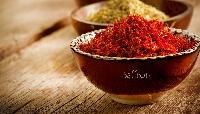
Saffron
Saffron is one of the highly prized spices known since antiquity for its color, flavor and medicinal properties. It is the dried "stigma" or threads of the flower of the Crocus sativus plant. It is a bulbous perennial plant that belongs to the family of Iridaceae, in the genus, Crocus, and known botanically as Crocus sativus. This exotic spice is a native of Southern Europe and today cultivated worldwide in many countries, particularly in Spain, Italy, France, Greece, Turkey, Iran, and in the Indian state of Jammu and Kashmir.The Crocus sativus plant grows to about 15-20cm in height and bears lavender colored flowers during each season which lasts from October until November. Each flower features perianth consisting of a stalk, known as “style,” connecting to three “stigmas” or threads to the rest of the plant. These orange-yellow colored stigmas along with the "style" constitutes "saffron" which is used as condiment spice.Good saffron crop production demands cool dry climate with well-drained rich fertile soil and irrigation facilities or sufficient amount of rain fall. The flowers are generally harvested during the early-morning hours and soon their stigma separated, allowed to dry, and packed for marketing. Saffron has a distinct flavor that comes from chemical compounds in it such as picrocrocin, and safranal. It also contains a natural carotenoid chemical compound, crocin, which gives saffron its golden-yellow hue. These traits along with its medicinal properties make it a valuable ingredient in many cuisines worldwide.Health benefits of Saffron : Saffron contains several plant-derived chemical compounds that are known to have been anti-oxidant, disease preventing, and health promoting properties. Their flower pistils compose several essential volatile oils, but the most important of them all is safranal which gives saffron its pleasant flavor. Other volatile oils in saffron are cineole, phenethenol, pinene, borneol, geraniol, limonene, p-cymene, linalool, terpinen-4-oil, etc. This colorful spice has many non-volatile active components; the most important of them is a-crocin, a carotenoid compound, which gives pistils their characteristic golden-yellow color. It also contains other carotenoids, including zea-xanthin, lycopene, a- and ß-carotenes. These are important antioxidants that help protect the human body from oxidant-induced stress, cancers, infections and acts as immune modulators. The active components in saffron have many therapeutic applications in many traditional medicines as antiseptic, antidepressant, anti-oxidant, digestive, anti-convulsant. This novel spice is a good source of minerals like copper, potassium, calcium, manganese, iron, selenium, zinc and magnesium. Potassium is an important component of cell and body fluids that helps control heart rate and blood pressure. Manganese and copper are used by the human body as co-factors for the antioxidant enzyme, superoxide dismutase. Iron is essential for red blood cell production and as a co-factor for cytochrome oxidasesenzymes. Additionally, it is also rich in many vital vitamins, including vitamin A, folic acid, riboflavin, niacin, vitamin-C that is essential for optimum health. Medicinal uses The active components present in saffron have many therapeutic applications in many traditional medicines since long time as anti-spasmodic, carminative, diaphoretic. Research studies have shown that, safranal, a volatile oil found in the spice, has antioxidant, cytotoxic effect on cancer cells, anticonvulsant and antidepressant properties. Alfa-crocin, a carotenoid compound, which gives the spice its characteristic golden-yellow hue, has been found to have anti-oxidant, anti-depressant, and anti-cancer properties. (Medical disclaimer). Selection and storage : Fresh saffron is available in the special spice markets. Try to buy dried whole stigma (pistils) instead of powdered saffron since oftentimes it may be adulterated. Choose well-sealed container from the authentic selling company label displaying date of package and expiry. Fresh spice should feature bright crimson-red color, and when rubbed between fingers, should release a very pleasant aroma and stain golden-yellow. Look for long stamens, each measuring 2 to 4 cm in length. Avoid inferior quality product featuring grey color streaks or light spots on the stigma. This spice has a characteristic pungent bitter-honey taste with pleasant aroma. Store in closed box and keep it in cool dark place (preferably inside the refrigerator) away from the light since light rays oxidizes the pigments in saffron and offsets its flavor. Culinary uses : Just a pinch of fresh saffron is enough to enhance the flavor and color of the entire recipe. There are several methods to use it in the kitchen. Whole stigma can be added directly to the preparations, or oftentimes, the threads are ground to paste using traditional mortar and pestle, and added to the recipes. In the third method, a pinch of saffron is added to a cup of hot water, steep; add this water to the recipes. Here are some serving tips : Saffron stigmas have been used as a flavoring base and coloring base in both food and drinks in Mediterranean, and Asian cuisines. Popularly known as "kesar" in Indian subcontinent, it has been in use in the preparation rice-pulov, rice-pudding, "halwa" and other sweet dishes in many Indian, Pakistani, and Cental Asian countries. It is also used as a color and flavoring base in the preparation of kulfi, ice-creams, cakes and drinks.
...more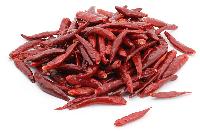
S4 Sannam Red Chilli
The aroma & pungency of Sannam S4 Chili is very much suitable for Indian, Chinese, American, European, Thai, Italian & Japanese Cuisines. The curry made in Sannam S4 Chili not only looks rich but also gives mouth watering tastes. It is well known as a commercial crop used as a condiment, culinary supplement or as a vegetable. S-4 Sannam Chili has got specific characteristics which have enabled it to earn international and national acclaim. It is mainly used for its pungency and for the extraction and derivation of capsaicin.Health benefits of S4 Sannam Chili :S-4 Sannam Chili is rich in vitamin C (185 mg/100g) and protein (11.98g/100g). S-4 Sannam Chilies are good for slimming down as it burns the calorie easily. Chilies stimulate the appetite, help to clear the lungs, and stimulate digestive system. Our Main Market :We export S-4 Sannam Chili having pungent smell & high purity to the markets of , Japan, Turkey, Lebanon, Jordan, Saudi Arabia, South Africa, China, South Korea, Malaysia, Thailand, Vietnam, Indonesia, Singapore, Philippines, Sri Lanka, Bangladesh, Burma, Kuwait, United Arabian Emirates, Bahrain, etc.Quality control :To make sure that our all the products are 100% defect free and it should be highly aromatic & fresh we have our own in-house quality check unit. Here, each and every product is properly tested before the final delivery. In fact, the selection of raw materials is also done under the supervision of qualified professionals having vast experience of the same field.Customer Satisfaction :We ensure maximum customer satisfaction by providing high quality products matching the client’s requirements. Our easy and hassle free delivery system involving swift logistic facilities which make us reach all over the world with in the stipulated time frame. We take at most care and are committed to provide after sales services to all our clients. Last but not the least we offer all spice products at very competitive prices.
...more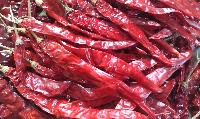
S273 Wrinkle Red Chilli
S-273 Wrinkle Chili is one of the most famous varieties of chili and has excellent domestic as well as international demand. It is extensively used around the globe for various culinary purposes. The annual production of S-273 Semi Wrinkle Chili in India is approximately 102000 tons per annum. The Botanical name of S-273 Wrinkle Chili is Capsicum annumL., Capsicum frutescens L. and family name is Solanaceae. As a quality conscious exporter, we procure S-273 Wrinkle Chill only from reliable farmers and reliable vendors only. We have our own quality control team & well qualified analysts who apply their consistence efforts to offer most accomplished range of S 273 Wrinkle Chili. This Chili is used in its whole form while frying foods or it is used in powder form for garnishing yummy food items and snacks.We, INCON EXIM are one of the Leading Processors, Cultivators, and Exporters & Suppliers of S 273 Wrinke Chili. We cultivate S 273 Wrinkle Chili in the most fertile lands of India & with the utilization of organic fertilizers only. Further it is processed under hygienic conditions to match international standards. We supply S 273 Wrinkle Chili with stem and without stem at most competitive price.Uses of S-273 wrinkle stem less chilies :The aroma, pungency & color of S-273 Wrinkle stem less chili is very much suitable for Indian, Chinese, American, European, Thai, Italian & Japanese Cuisines. The curry made with S-273 Wrinkle chili not only looks rich but also gives mouth watering tastes. It is well known as a commercial crop used as a condiment, culinary supplement or as a vegetable. S-273 Wrinkle stem less chili has got specific characteristics which have enabled it to earn international and national acclaim. It is mainly used for its pungency, high color & aroma. It is very good for the purpose of crushing & making red chili powder. Health benefits of S-273 Semi wrinkle stem less chilies :S-273 Wrinkle stem less chilies is rich in vitamin C (185 mg/100g) and protein (11.98g/100g). S-273 Chilies are good for slimming down as it burns the calorie easily. Chilies stimulate the appetite, help to clear the lungs, and stimulate digestive system. Oil extracted from S 273 wrinkle chili is used in various kinds of medicines. Consumption of whole chili or chili powder helps to reduce cholesterol in the blood.Our Main Market / Key Customer :We export S-273 Wrinkle chili having pungent smell & high purity to the markets of Saudi Arabia, South Africa, China, Malaysia, Thailand, Vietnam, Indonesia, Singapore, Sri Lanka, United Arabian Emirates, etc.Quality control :To make sure that our all the products are 100% defect free and it should be highly aromatic & fresh we have our own in-house quality check unit. Here, each and every product is properly tested before the final delivery. In fact, the selection of raw materials is also done under the supervision of qualified professionals having vast experience of the same field.Customer Satisfaction :We ensure maximum customer satisfaction by providing high quality products matching the client’s requirements. Our easy and hassle free delivery system involving swift logistic facilities which make us reach all over the world with in the stipulated time frame. We take at most care and are committed to provide after sales services to all our clients. Last but not the least we offer all spice products at very competitive prices.
...more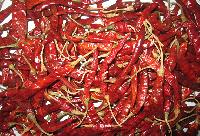
S17 Red Chilli
S17 Teja chilly is considered to be the Kings of all Indian chilies. It has a long history in India. Teja Chilly was first grown in 1944 & was later more developed with regular analysis, researches & scientific tests. Because of its highest pungency & blood red color, Teja Chili became immensely popular in Indian as well as in International Chili markets. Looking towards to ever increasing demand of Teja Chilly farmers with the more efforts cultivated S 17 Teja chilly in bigger quantity. Presently annual production of S17 Teja Chili is 150,000 metric tons. Out of which 70% is being exported worldwide from India. Teja Chili is mostly grown in Andhra Pradesh, Karnataka, Maharashtra, Madhya Pradesh & Gujarat states of India. The harvesting season of Teja Chili is from December to March.We, INCON EXIM are one of the Leading Processors, Cultivators, and Exporters & Suppliers of S 17 Teja Chili. We cultivate S 17 Teja Chili in the most fertile lands of India & with the utilization of organic fertilizers only. Further it is processed under hygienic conditions to match international standards. We supply S-17 Teja Chili with stem and without stem at most competitive price.Our Main Market / Key Customer :We export Teja Chili having pungent smell & high purity to the markets of Saudi Arabia, South Africa, China, Malaysia, Thailand, Vietnam, Indonesia, Singapore, Sri Lanka, United Arabian Emirates, etc.Quality control :To make sure that our all the products are 100% defect free and it should be highly aromatic & fresh we have our own in-house quality check unit. Here, each and every product is properly tested before the final delivery. In fact, the selection of raw materials is also done under the supervision of qualified professionals having vast experience of the same field.Customer Satisfaction :We ensure maximum customer satisfaction by providing high quality products matching the client’s requirements. Our easy and hassle free delivery system involving swift logistic facilities which make us reach all over the world with in the stipulated time frame. We take at most care and are committed to provide after sales services to all our clients. Last but not the least we offer all spice products at very competitive prices.
...more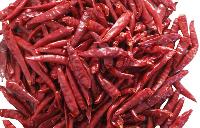
S 12 Red Chilli
S12 Chili is mostly grown in the fertile Indian lands of Madhya Pradesh and Maharashtra. The annual output of S12 Chili is approximately 60000 metric tons. The harvesting season for S12 is October to February. Previously S12 Chilies were only meant for domestic consumption but in the present situations it is widely exported to several reputed countries of world, Due to its appearance is like teja chili and its lowered cost value the buyers prefer them the most, The demand of S12 has only increased in the past 4 years by looking to the ever increasing demand, the farmers of Madhya Pradesh and Maharashtra has done their best efforts to increase the productivity to the optimum extents. The most attractive factor of S12 Chilies is that it comes naturally stem less. Hence no manual workers are involved in stem cutting process. Therefore it is convenient for Exporters of S12 Chili to export the goods quickly and also it is a great benefit to the overseas importers of S12 to import chili as they are able to get the speedy shipment.S-12 Chili supplied by us is procured from reputed & well managed Indian farms. After procurement we do sorting, cleaning, grading and later it is dried in natural light to the extent till it becomes crispy and yummy to consume. Free from toxic or unadulterated ingredients, this chili is precisely processed in the utmost hygiene environment. We, INCON EXIM are one of the Leading Processors, Cultivators, and Exporters & Suppliers of S 12 Chili. We cultivate S 12 Chili in the most fertile lands of India & with the utilization of organic fertilizers only. Further it is processed under hygienic conditions to match international standards. We supply S-12 Chili with stem and without stem at most competitive price.Uses of S-12 Chili :S-12Chilli is very highly utilized for Indian, Chinese, American, European, Thai, Italian & Japanese Cuisines. The curry prepared with the S-12 Chili is excellent in taste & rich red in color.S-12 Chill has got specific characteristics which have enabled it to earn international and national acclaim. It is mainly used for its pungency and for the extraction of Chili oil.Our Main Market / Key Customer :We export S 12 Chili having pungent smell & high purity to the markets of Saudi Arabia, South Africa, China, Malaysia, Thailand, Vietnam, Indonesia, Singapore, Sri Lanka, United Arabian Emirates, etc.Quality control :To make sure that our all the products are 100% defect free and it should be highly aromatic & fresh we have our own in-house quality check unit. Here, each and every product is properly tested before the final delivery. In fact, the selection of raw materials is also done under the supervision of qualified professionals having vast experience of the same field.Customer Satisfaction :We ensure maximum customer satisfaction by providing high quality products matching the client’s requirements. Our easy and hassle free delivery system involving swift logistic facilities which make us reach all over the world with in the stipulated time frame. We take at most care and are committed to provide after sales services to all our clients. Last but not the least we offer all spice products at very competitive prices.
...more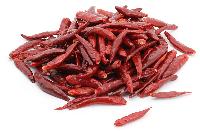
Red Chili
2 Metric Ton (MOQ)
Chilli is a fruit which belongs to Capsicum genus. It has many varieties which are differentiated on its pungency measured on Scoville Scale. Chilli fruit when ripened and dried becomes red chilli, which is further grounded to form red chilli powder. These are categorized as hot pepper. Red chilli became famous all around the world because of its characteristics like pungency, taste and flavor matched black pepper, which was very expensive during old times and thus it became one of the most important and integral spices. Apart from its uses in cooking, it has medicinal uses as well. It helps in digestion, it develops blood and is a very rich source of vitamin C, which helps in developing the immune system. It is used as spray weapon also for keeping away attackers and mobsters. Among all the major producers, India dominates in chilli production and is the largest exporter as well due to superior quality found here.
...more
Mustard Seeds
Mustard seeds have been highly prized culinary oil-seeds being in use since earlier times. The seeds are fruit pods obtained from mustard plant, in the Brassica family. Some of close members of mustards in this family include cabbage, broccoli, brussels-sprouts, etc. Scientific name: Brassica juncea. Mustards are native to Asia Minor, but these days cultivated as one of the main commercial crop in Canada, India, China, and temperate climates of European region.Mustards are winter crops. The plant reaches about 4-5 feet in height and bears golden yellow colored flowers. Its tiny, round seeds measuring about one mm in diameter are encased inside a fruit pod, in a similar fashion like green pea pod. In general, three main varieties of mustard are grown worldwide for use.White mustard seeds (Sinapis alba or Brassica alba): The seeds are light straw-yellow colored and are slightly larger than the other two varieties. White seeds exhibit mild pungency. Black mustards (Brassica nigra): The seeds are commonly seen in South Asia. The seeds are sharp and more pungent than other two varieties. Brown mustards (Brassica juncea): The seeds are native to sub-Himalayan plains of Northern India.Health benefits of mustard seeds : Generally perceived as health benefiting spice, mustard seeds are indeed very rich in phyto-nutrients, minerals, vitamins and anti-oxidants. Being one of the chief oil seeds, mustards are indeed very high in calories; 100 g of seeds provide 508 calories. Nonetheless, the seeds are made of quality proteins, essential oils, vitamins, minerals, and dietary fiber. The seeds are high in essential oils as well as plant sterols. Some of important sterols include such as brassicasterol, campesterol, sitosterol, avenasterol and stigmasterol. Some of glucosinolate and fatty acids in the seeds include sinigrin, myrosin, erucic, eicosenoic, oleic, and palmitic acids. Mustard seeds are an excellent source of essential B-complex vitamins such as folates, niacin, thiamin, riboflavin, pyridoxine (vitaminB-6), pantothenic acid. These vitamins are essential in the sense that body requires them from external sources to replenish. These B-complex groups of vitamins help in enzyme synthesis, nervous system function and regulating body metabolism. 100 g of mustards provide 4.733 mg of niacin (vitamin B-3). Niacin is a part of nicotinamide co-enzymes that help lower blood cholesterol and triglyceride levels. Mustard seeds contain flavonoid and carotenoid antioxidants such as carotenes, zea-xanthin, and lutein. In addition, the seeds compose a small amount of vitamin anti-oxidants such as vitamin A, C, and vitamin K. The seeds are an excellent source of vitamin E, gamma tocopherol; contain about 19.82 mg per 100 g (about 132% of RDA). Vitamin E is a powerful lipid soluble antioxidant, required for maintaining the integrity of cell membrane of mucus membranes and skin by protecting it from harmful oxygen-free radicals. Mustards are rich source of health benefiting minerals. Calcium, manganese, copper, iron, selenium and zinc are some of the minerals especially concentrated in these seeds. Calcium helps build bone and teeth. Manganese is employed by the body as a co-factor for the antioxidant enzyme superoxide dismutase. Copperis required in the production of red blood cells. Iron is required for the red blood cell formation and cellular metabolism. Medicinal uses :Mustard seeds and its oil has traditionally been used to relieve muscle pain, rheumatism and arthritic pain.In India, mustard oil is applied over scalp and is believed to stimulate hair growth. Its ground seeds act as a laxative, stimulant to gastric mucosa and increase intestinal secretion. (Disclaimer).Selection and storage : Whole mustard seeds have no flavor and smell at all. The hot pungent taste of mustard is because of release irritant gases when its seeds subjected to crush and mix with water to activate enzyme myrosinase. In the spice stores one may find all varieties of whole seeds, ground powder, pastes and different mustard sauces. White mustard seeds feature less pungent flavor than brown or black mustard seeds. Whole, dry mustards keep well for months at room temperature when stored in cool, dry and humid free conditions. However ground seeds and other preparations of mustards should be kept in tight, air seal containers and placed inside the refrigerator for a prolonged shelf life. Culinary uses : Mustards are used extensively in Indian, Pakistani, Bangladesh, Mediterranean and German cooking. Whole seeds, ground or powdered form, prepared pastes, sauces and oil are all used in cooking. The aroma and pungent flavor of mustards come from the essential oil, sinalbin. This compound releases isothiocyanate chemicals upon enzymatic reaction mediated by myrosinase enzyme. Here are some serving tips : Mustards exude pungent nutty flavor when gently roasted under low flame. Brown as well white mustards are used in pickling with raw mango, bitter gourd, etc, in India. Mustard fish curry, prepared with thin mustard paste, coriander powder, chilies and nigella is popular in Bangladesh and West Bengal in Indian subcontinent. Different kind of mustards employ mustard seeds mixed with herbs, spices, honey, tomato, etc., in many parts of the world. Mustard paste is used in salad dressings, sandwiches, and hot dogs and in mayonnaise. American yellow mustard is prepared with white seeds, vinegar, spices, turmeric and sugar. Mustard oil is one of popular cooking oils used in many North Indian and Pakistani recipes.
...more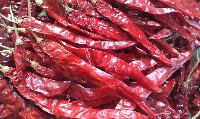
Endo 5 Red Chilli
Endo 5 Chili is one of the most famous varieties of Red Chilly in India. It is majorly grown in the fertile lands of Andhra Pradesh, Karnataka and Maharashtra. The skin of Endo 5 is very thick as compared to other varieties of Indian Chilies and due to an additional feature of having a high heat values it is considered to be most ideal for making Crushed chili (chili flakes) which is majorly consumed with pizzas and burgers worldwide. Endo 5 Chili is also known as Indem- 5 Chili, US- 5 and Endo 5 Chilies also. The average annual output of Endo 5 Chili is 20000 MT. The harvesting season is January to May every year. As per the data’s analysis 90% of Endo 5 Chilies are being exported from India to various reputed countries of World.We, INCON EXIM are one of the Leading Processors, Cultivators, Exporters & Suppliers of Endo 5 Chili. We cultivate Endo 5 Chili in the most fertile lands of India & with the utilization of organic fertilizers only. Further it is processed under hygienic conditions to match international standards. We supply Endo 5 Chili with stem and without stem at most competitive price.Uses of Endo 5 Chili :Endo 5 Dry chilly is extensively used as spice in curried dishes. It is also used as an ingredient in curry powder and in seasonings. Endo 5 Red Hot Chili is used in making hot sauces. As a medicine Endo 5 Chilies are used as counter irritant in Lumbago, Neuralgia, and Rheumatic disorders. Capsicum has a tonic and carminative action. Taken inordinately it may cause gastro-enteritis. The enzyme isolated from Endo 5 Red chilly is used in the treatment of certain type of cancers. Oleoresin capsicum is used in pain balms and vaporubs. Dehydrated green Endo 5 chilly is a good source of vitamin ‘c’.Our Main Market / Key Customer :We export Endo 5 Chili having pungent smell & high purity to the markets of Saudi Arabia, South Africa, China, Malaysia, Thailand, Vietnam, Indonesia, Singapore, Sri Lanka, United Arabian Emirates, etc.Quality control :To make sure that our all the products are 100% defect free and it should be highly aromatic & fresh we have our own in-house quality check unit. Here, each and every product is properly tested before the final delivery. In fact, the selection of raw materials is also done under the supervision of qualified professionals having vast experience of the same field.Customer Satisfaction :We ensure maximum customer satisfaction by providing high quality products matching the client’s requirements. Our easy and hassle free delivery system involving swift logistic facilities which make us reach all over the world with in the stipulated time frame. We take at most care and are committed to provide after sales services to all our clients. Last but not the least we offer all spice products at very competitive prices.
...more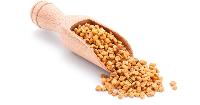
Fenugreek Seeds
Fenugreek seeds are tiny, bitter, dicotyledonous seeds of herb fenugreek. Toasted gently, they exhibit strongly aromatic and pungent flavor. Traditionally, fenugreeks have been found use to cure digestive problems and to improve breast milk secretion in the nursing mothers. In the botany, fenugreek is a small annual leguminous herb belonging in the fabaceae family, genus: Trigonella. Scientific name: Trigonella foenum-graecum. Some of the common names of herb fenugreek include greek-hay, mehti, bird's foot, greek-clover, etc.Fenugreek is native to the sub-Himalayan plains of Indian subcontinent, and today, it is widely grown all over the southern and Mediterranean Europe, Middle-East Asia and northern African regions. Fenugreek grows up to about 1-2 feet in height with light green color tri-foliate leaves and white flowers. It bears long, slender, yellow-brown pods containing about 10-20 golden-yellow color seeds. Its seeds are small, hard, and resemble tiny, multi-faceted stone-pieces. Raw seeds have maple flavor and bitter taste; however, their taste becomes more acceptable once they gently roasted under light heat.Health benefits of fenugreek seeds : Fenugreek seeds are rich source of minerals, vitamins, and phytonutrients. 100 g seeds carry 323 calories. The seeds compose ample amounts of soluble dietary fiber. Soaking them in water softens their outer coat and turns it slimy (mucilaginous). 100 g of seeds provide am 24.6 g or over 65% of dietary fiber. Non-starch polysaccharides (NSP) constitute major portion of this fiber content in the fenugreek seeds. Some important NSP's include saponins, hemicellulose, mucilage, tannin, and pectin. These compounds help lower blood LDL-cholesterol levels by inhibiting bile salts re-absorption in the colon. They also bind to toxins in the food and help to protect the colon mucusa from cancers. NSPs (non-starch polysaccharides) increase the bulk of the food and speed up bowel movements. Altogether, NSPs assist in smooth digestion and help relieve constipation ailments. It has been established that amino-acid 4-hydroxy isoleucine in the fenugreek seeds has facilitator action on insulin secretion. In addition, fiber in the seeds helps lower rate of glucose absorption in the intestines, and thus help regulate blood sugar levels. Fenugreek seeds are therefore one of the recommendeded food ingredients in the diabetic diet. The seeds contain many phytochemical compounds such as choline, trigonelline diosgenin, yamogenin, gitogenin, tigogenin and neotigogens. Together, these compounds attribute for the medicinal properties of fenugreeks. This prized spice is an excellent sources of minerals like copper, potassium, calcium, iron, selenium, zinc, manganese, and magnesium. Potassium is an important component of cell and body fluids that helps control heart rate and blood pressure by countering action on sodium. Iron is essential for red blood cell production and as a co-factor for cytochrome-oxidases enzymes. It is also rich in many vital vitamins that are essential nutrients for optimum health, including thiamin, pyridoxine (vitamin B6), folic acid, riboflavin, niacin, vitamin A, and vitamin-C. Medicinal uses of fenugreek seed : Its seeds have been used in many traditional medicines as a laxative, digestive, and as a remedy for cough and bronchitis. If used regularly, fenugreeks may help control cholesterol, triglyceride as well as high blood sugar (glycemic) levels in diabetics. Fenugreek seeds added to cereals and wheat flour (bread) or made into gruel, given to the nursing mothers may increase breast milk production. Selection and storage : Fenugreek seeds are readily available in the spice stores all around the year. One may find different forms of seeds such as whole seeds, powdered or vacuum packed paste in these stores. Choose whole seeds from authentic brands. The seeds should feature bright golden-yellow color, hard and exude delicate maple flavor. Avoid old stocks as they may infected by fungal mold and out of flavor. Store whole seeds in airtight glass container and place in a cool, dark place where it can stay fresh for several months. Powdered or paste form of fenugreek, however, should be kept in the air-sealed packets and placed inside the refrigerator. Culinary uses : Traditionally, fenugreek seeds are being used in a wide range of culinary recipes, especially in spice mix. The seeds either in the forms of whole seeds, sprouted, powder, sauce or as paste used in a variety of savory dishes in many parts of Middle-East, India, Mediterranean and Central Asian regions. The seeds should be added in small quantities in food since they possess strong aroma and bitter taste. Dry fry under light heat in order to mellow their flavor. Here are some serving tips : Fenugreek is one of the chief ingredients in Indian curry and masala powders. Small quantity of sprouted seeds added to vegetables and lentil dishes. Fenugreek greens, known as methi, either fresh or dried, is one of the prominent leafy-greens featuring in India, Pakistan, and Persian cooking with spinach, potato (aaloo-methi), carrots, etc. Sprouted fenugreek seeds are used in salads, paste, dips, fillings, etc.
...more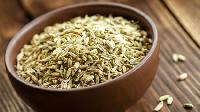
Fennel Seeds
Sweet, anise-flavored fennel seed together with thyme, nettle, mugwort, etc., has been revered as one of nine Anglo-Saxon sacred herbs for its conventional health benefits. The spice is one of the most sought-after ingredients in many popular cuisines all over the Mediterranean regions. Fennel is a perennial herb belonging to the parsley (Umbelliferae) family; a broad family of herbs and spices which also includes some of other common members such as caraway, dill, anise, cumin…etc. Scientific name of fennel is Foeniculum vulgare var. dulce.Fennel is native to Southern Europe and grown extensively all over Europe, Middle-East, China, India, and Turkey. This herbaceous plant reaches up to 2 meters (about 6 feet) in height with deep green feathery (lacy) leaves and bears golden-yellow flowers in umbels. In general, fennel seeds are harvested when their seed heads turn light-brown. The seeds, which closely resemble that of anise seeds in appearance, feature oblong or curved (comma) shape, about 3-4 mm long, light brown-color with fine vertical stripes over their surface.In general, fennels are harvested during early hours of the day to avoid loss of seeds in the field. As in caraway, its stems are staked until they were dry and then threshed, processed and dispatch to the markets. Fennel bulb (Foeniculum vulgare var. azoricum), used as a vegetable, is closely related to seeding fennel. It has grown for its anise flavored sweet taste fronds in many parts of Mediterranean region.Health benefits of fennel seeds : Fennel symbolizes longevity, courage, and strength. In addition to its use as medicinal values, fennel has many health benefiting nutrients, essential compounds, anti-oxidants, dietary fiber, minerals, and vitamins. Fennel seeds indeed contain numerous flavonoid anti-oxidants like kaempferol and quercetin. These compounds function as powerful anti-oxidants by removing harmful free radicals from the body thus offer protection from cancers, infection, aging and degenerative neurological diseases. Like in caraway, fennel seeds too are rich source of dietary fiber. 100 g seeds provide 39.8 g of fiber. Much of this roughage is metabolically inert insoluble fiber, which helps increase bulk of the food by absorbing water throughout the digestive system and easing constipation prolems. In addition, dietary fibers bind to bile salts (produced from cholesterol) and decrease their re-absorption in colon. It thus helps lower serum LDL cholesterol levels. Together with flavonoid anti-oxidants, fiber composition of fennel helps protect the colon mucusa from cancers. Fennel seeds compose of health benefiting volatile essential oil compounds such as anethole, limonene, anisic aldehyde, pinene, myrcene, fenchone, chavicol, and cineole. These active principles in the fennel are known to have antioxidant, digestive, carminative, and anti-flatulent properties. Fennel seeds are concentrated source of minerals like copper, iron, calcium, potassium, manganese, selenium, zinc, and magnesium. Copper is required in the production of red blood cells. Iron is required for red blood cell formation. Zinc is a co-factor in many enzymes that regulate growth and development, sperm generation, digestion and nucleic acid synthesis. Potassium is an important component of cell and body fluids that helps controlling heart rate and blood pressure. Manganese is used by the body as a co-factor for the powerful anti-oxidant enzyme, superoxide dismutase. Furthermore, fennel seeds indeed are the storehouse for many vital vitamins. Vitamin A, vitamin E, vitamin C as well as many B-complex vitamins like thiamin, pyridoxine, riboflavin and niacin particularly are concentrated in these seeds. Selection and storage : Fennel seeds are available year around in the markets either in the form of seeds or in processed ground form. In the store, buy whole fennel seeds instead of powder since oftentimes it may contain adulterated spicy powders. Store dry fennel seeds as you do in case of other seeds like caraway, dill, etc. Place whole seeds in a clean air-seal container and store in cool, humid free and dark place. Ground and powdered fennel should be stored inside the refrigerator in airtight containers and should be used sooner since it loses flavor quickly due to evaporation of its essential oils. Medicinal uses : Fennel has long been used as a remedy for flatulence and indigestion in traditional medicines. Fennel seed decoction or added as spice in food has been found to increase breast milk secretion in nursing mothers. Fennel water often is used in newborn babies to relieve colic pain and help aid digestion. Fennel seed oil is used to relieve coughs, bronchitis and as massage oil to cure joint pains. Culinary uses : Fennel seeds exude anise like sweet fruity-aroma when rubbed between fingers. Its herb parts, including tender growing tops, root-bulb, dried stalks, and seeds are used extensively in a wide variety of cuisines all over the world. In order to keep their fragrance and flavor intact, fennel is generally ground just before preparing dishes or whole seeds are gently toasted under light-heat before using them in a recipe.
...more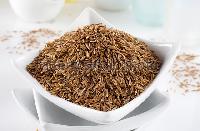
Cumin Seeds
Widely popular for their distinctive spice flavor, cumin seeds are commonly featuring ingredients in the North African, Middle-East, Western Chinese, Indian, Cuban and North Mexican cuisine. The spice is native to Middle-East Asian region, and today, grown all over the world for its pleasantly aromatic seeds. Cumin is a small flowering herbaceous plant belonging in the Apiaceae, family, in the genus; Cuminum. Its scientific name is Cuminum cyminum. The cumin plant flourishes well in sandy, fertile soil, assisted with hot summer weather conditions. It bears small, gray-yellow, oblong shaped seeds with vertical ridges on their outer surface. The seeds closely resembles caraway seedsin appearance.Cumin seeds impart distinctive strong flavor, and warm perception on taste buds. This comes from certain group of essential oils in them. The chief constituent and important aromatic compound in cumin is cuminaldehyde (4-isopropylbenzaldehyde). Black cumin (Bunium persicum), also popular as wild or shahi jeera in the Persian and Indian sub-continent, is related variety of regular cumin. Its seeds feature long, slender, curved, dark-brown pods with distinctive earthy flavor.Health benefits of cumin seeds : Cumin seeds contain numerous phyto-chemicals that are known to have antioxidant, carminative and anti-flatulent properties. The seeds are an excellent source of dietary fiber. Its seeds contain certain health-benefiting essential oils such as cuminaldehyde (4-isopropylbenzaldehyde), pyrazines, 2-methoxy-3-sec-butylpyrazine, 2-ethoxy-3-isopropylpyrazine, and 2-methoxy-3-methylpyrazine. The active principles in the cumin may improve gut motility and help in digestion by augmenting gastro-intestinal enzyme secretions. The spice is an excellent sources of minerals like iron, copper, calcium, potassium, manganese, selenium, zinc and magnesium. Copper is required in the production of red blood cells. Iron is required for red blood cell formation. Zinc is a co-factor in many enzymes that regulate growth and development, digestion and nucleic acid synthesis. Potassium is an important component of cell and body fluids that helps controlling heart rate and blood pressure. Manganese is used by the body as a co-factor for the powerful anti-oxidant enzyme, superoxide dismutase. It also contains very good amounts of B-complex vitamins such as thiamin, vitamin B-6, niacin, riboflavin, and other vital anti-oxidant vitamins like vitamin E, vitamin A, and vitamin C. The seeds are also rich source of many flavonoid phenolic anti-oxidants such as carotenes, zea-xanthin, and lutein. Selection and storage :Cumin spice can be readily available around the year in the market. You can buy its seeds as well as ground powder in ready made packs. Good-quality cumin should release pleasant yet peppery flavor when squeezed between index.
...more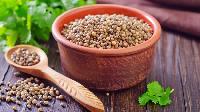
Coriander Seeds
Have you ever caught up with gripping stomach pain? Drinking a few sips of extraction obtained from coriander seeds, dill, caraway, fennel, and aniseed from your granny's kitchen spice-box perhaps would be the most effective carminative remedy for this ailment! Coriander is a small, hollow-stemmed plant in the Apiaceae family, in the genus: Coriandum. Its scientific name is Coriandum sativum. Pleasant, aromatic and spicy, its seeds have been found utility since ancient times in cooking as well as in various traditional medicines.Coriander is native to South-Eastern Europe and grown extensively all over the Europe, Middle East, China, India, and Turkey. It is recognized as cilantro in the west. This herbaceous plant grows up to 2 feet in height with branching stems, featuring deep green soft, hairless bi or tri-lobed leaves. The mature plant bears small light pink color flowers that subsequently turn into globular or oval-shaped fruits (seeds). The seeds measure about 4-6 mm in diameter with central hollow cavity containing two vertical vittae containing some important essential oils. Coriander seeds can be ready for harvest when the plant turn brown and its leaves begin to dry and fall. Immature seeds are light green and taste bitter. To harvest, the crop is cut, tied in small bundles, and sun-dried for several days. Traditionally, to separate the seeds, either the sheaves are beaten with stick or a lightweight roller used to wear off the pods.Health benefits of coriander seeds : Coriander seeds possess many plant-derived chemical compounds that known to have been anti-oxidant, disease preventing, and health promoting properties. The characteristic aromatic flavor of coriander seeds comes from their essential volatile oils and fatty acids. Some important fatty acids in the dried seeds include petroselinic acid, linoleic acid (omega 6), oleic acid, andpalmitic acid. In addition, the seeds contain essential oils such as linalool (68%), a-pinene (10%), geraniol, camphene, terpine etc. Together; these active principles are responsible for digestive, carminative, and anti-flatulent properties of the seeds. As in other spices, coriander is also rich in dietary fiber. 100 g seeds provide 41.9 g of fiber. Much of this fiber is metabolically inert insoluble fiber, which helps increase bulk of the food by absorbing water throughout the digestive system and help easing constipation condition. In addition, dietary fibers bind to bile salts (produced from cholesterol) and decrease their re-absorption in colon, thus help lower serum LDL cholesterol levels. Together with flavonoid anti-oxidants, fiber composition of coriander helps protect colon mucusa from cancers. Its seeds are an excellent source of minerals like iron, copper, calcium, potassium, manganese, zinc and magnesium. Copper is required for the production of red blood cells. Iron is essential for cell metabolism and red blood cell formation. Zinc is a co-factor in many enzymes that regulate growth and development, sperm generation, digestion and nucleic acid synthesis. Potassium is an important component of cell and body fluids that helps controlling heart rate and blood pressure. Manganese is utilized by the body as a co-factor for the powerful anti-oxidant enzyme, superoxide dismutase. Unlike other dry spice seeds that lack in vitamin C, coriander seeds contain an ample amount of this anti-oxidant vitamin. 100 g of dry seeds provide 21 mg or 35% of RDI of vitamin-C. Furthermore, the seeds are the storehouse of many vital B-complex vitamins like thiamin, riboflavin, and niacin. Selection and storage : Coriander seeds as well as its oil can be readily available in the markets year around. The seeds used as spice. Good-quality coriander seeds should release pleasant, slightly peppery flavor when squeezed between index and thumb fingers. In the store, buy whole seeds instead of coriander powder since, oftentimes it may contain adulterated spicy mix. At home, store seeds in cool, dry, dark place, in airtight containers. This way, they keep well for many months and can be milled using a hand-mill whenever required. Ground or powdered coriander should be stored inside airtight containers and placed in the refrigerator. Use this spicy powder as early as possible since it loses its flavor rather quickly due to evaporation of essential oils. Culinary uses :Dried coriander seeds are one of the common spice ingredients used worldwide. In general, completely dried seeds gently roasted under low flame just before milling in order to get fine powder. Roasting releases special aromatic compounds and essential oils in the seeds.Here are some serving methods :Coriander seeds are used as flavoring agent in confectionary, stews, sausages, sweet breads, and cakes.Coriander leaves as well as seeds are being used as an aromatic spice in Chinese, Indian, Pakistani, Middle-eastern and European cooking.Russian dark rye bread, "Borodinsky bread" uses coriander seeds.In India, ground powder of coriander seeds is a common household spice powder that is used in pickling, chutneys, stews, curries, marinades as well as in sausages.Medicinal uses : Along with dill, and fennel, coriander seeds are being used as a carminative and digestive items in variety of gripe water preparations. The seeds are chewed as a remedy to prevent halitosis (unpleasant breath). (Medical disclaimer).
...more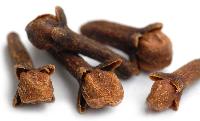
Cloves
Cloves are one of the highly prized spices, widely recognized all over the world for their medicinal and culinary qualities. The spices actually are the "flower buds" from evergreen rain-forest tree native to Indonesia. Botanically, clove-spice belongs to the family of Myrtaceae in the genus; Sygyzium, and scientifically named as Sygizium aromaticum. At their initial stages of development, flower buds are pale in color which gradually turn to green, and, finally develop into bright-red clove buds by the time of harvesting. The buds are generally picked up when they reach 1.5-2 cm in length. Structurally, each bud consists of a long calyx; terminating in four spreading sepals and four unopened petals. These closed petals form into a small ball (dome) at the top. The sweet aroma of cloves is due to eugenol, an essential oil in them.Medicinal properties and health benefits of cloves : The active principles in the clove are known to have antioxidant, anti-septic, local anesthetic, anti-inflammatory, rubefacient (warming and soothing), carminative and anti-flatulent properties. The spice contains health benefiting essential oils such as eugenol. It is a phenyl-propanoids class of chemical compound which gives pleasant, sweet aromatic fragrances to the clove-bud. Eugenol has local anesthetic and antiseptic properties, hence; useful in dental care essentials as well as in treatment procedures. The other important constituents in this spice include : Essential oils : acetyl eugenol, beta-caryophyllene and vanillin, crategolic acid; Tannins : gallotannic acid, methyl salicylate (painkiller); The flavonoids : eugenin, kaempferol, rhamnetin, and eugenitin; Triterpenoids : such as oleanolic acid, stigmasterol and campesterol and several sesquiterpenes. The active principles in the clove may increase gut motility as well as improve the digestion power through increasing gastro-intestinal enzyme secretions. Thus, helps relieve indigestion and constipation problems. The spice also contains a good amount of minerals like potassium, manganese, iron, selenium and magnesium. Potassium is an important electrolyte of cell and body fluids that helps control heart rate and blood pressure. Manganese is used by the body as a co-factor for the antioxidant enzyme, superoxide dismutase. Further, the spice buds contain very good amounts of vitamin A and beta-carotene levels. These compounds are known to have antioxidant properties. Vitamin A is also required by the body for maintaining healthy mucus membranes and skin in addition to essential for vision. Consumption of natural foods rich in flavonoids helps to protect the body from lung and oral cavity cancers. Additionally, this spice is a good source of vitamin-K, vitamin-B6 (pyridoxine), thiamin (vitamin B-1), vitamin-Cand riboflavin. Consumption of foods rich in vitamin C helps the body develop resistance against infectious agents and scavenge harmful oxygen-free radicals. Selection and storage : Clove buds can be readily available year around in the spice markets. Good quality buds should release sweet fragrance when squeezed between the thumb and index fingers. In the store, buy whole buds instead of powder since oftentimes it may contain adulterated spicy powders. The buds should be wholesome with stem and sepals, and compact. Whole cloves should be stored in cool dark place in close containers for many months and can be milled using "hand mill" as and when required. Ground/powder clove should be stored inside the refrigerator in airtight containers and should be used as early as possible since it loses its flavor quickly. Medicinal uses : The essential oil, eugenol in this spice has been in therapeutic use in dentistry as a local-anesthetic and antiseptic for teeth and gum. Eugenol also has been found to reduce blood sugar levels in diabetics, but further detailed studies required to establish its benefits. Its decoction is sometimes used in treating flatulence and indigestion in traditional medicine preparations. It is also thought to have natural anti-parasite (kills intestinal worms) function. The essential volatile oils functions as a rubefacient, meaning that it irritates the skin and expands the blood vessels, increasing the flow of blood to make the skin feel warmer, making it a popular home remedy for arthritis and sore muscles, used either as a poultice or in hot baths. Clove oil is also used in aromatherapy. Culinary uses :In order to keep the fragrance and flavor intact, clove is generally grounded just before preparing dishes and added at the last moment in the cooking recipes. This is because prolonged cooking results in evaporation of its essential oils. This popular spice has been used in preparation of many regular dishes in Asian and Chinese cuisine since ancient times. Along with other spices like pepper, turmeric, ginger etc. is being used in marinating chicken, fish, and meat. Some of Indian vegetarian, chicken and rice dishes (biriyani) contain cloves and in the Middle East, it is used in meat and rice dishes. The spice also features in the preparation of soups, barbecue sauces, pickling and as one of the ingredients in curry powders.
...more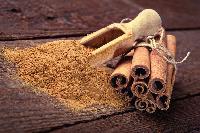
Cinnamon Sticks
Cinnamon spice is one of the highly prized spices that has been in use since biblical times for its fragrance, medicinal and culinary properties. This delightfully exotic, sweet-flavored spice traditionally obtained from the inner brown bark of Cinnamomum trees which when dried rolls into a tubular-sticks, known commercially as "quill." The cinnamon plant is a small, evergreen bushy tree belonging to the family of Lauraceae or laurel within the genus, Cinnamomum. This novel spice is native to Sri Lankan island but also grow in many other countries such as Indonesia, Myanmar, Bangladesh, India, China.Different cultivars of cinnamons exist; however, Sri Lankan variety considered widely as "true cinnamon" (Cinnamonum verum.) Traditionally, mature cinnamon tree inner bark bruised using a brass rod, which is then peeled off from the tree. In the processing units, this layer sliced into long stripes which are then rolled into quills by hand and allowed to dry under the sunlight.Aromatic cinnamon essential oil (makes up 0.5% to 1% of its composition) also extracted from the same tree. In the factories, this fragrant-rich inner layer pounded roughly, macerated in seawater, and then quickly distilled. Cinnamon oil features golden-yellow color with the characteristic tint of cinnamon and very pungent, aromatic taste. The pungent taste and scent in cinnamon spice is because of chemical compounds, cinnamic aldehyde and cinnamaldehyde. Cassia, also known as Chinese cinnamon, is a different member of Lauraceae family, and named as Cinnamomum cassia. Cassia is coarser, more spicy, and pungent but less fragrant than cinnamon. It is usually substituted for the cinnamon in savory dishes.Health benefits of cinnamon : The active principles in the cinnamon spice known to have anti-oxidant, anti-diabetic, anti-septic, local anesthetic, anti-inflammatory, rubefacient (warming and soothing), carminative and anti-flatulent properties. Cinnamon spice has the highest anti-oxidant strength of all the food sources in nature. The total measured ORAC (Oxygen radical absorbance capacity) value for this novel spice is 2,67,536 trolex equivalents (TE), which is many hundred times more than in chokeberry, apples, etc. The spice contains health benefiting essential oils such as eugenol, a phenylpropanoids class of chemical compound that gives pleasant, sweet aromatic fragrance to it. Eugenol has got local anesthetic and antiseptic properties, hence; employed in the dental and gum treatment procedures. Other important essential oils in cinnamon include ethyl cinnamate, linalool, cinnamaldehyde, beta-caryophyllene, and methyl chavicol. Cinnamaldehyde in cinnamon-sticks has been found to have anti-coagulnt (prevents blood-lotting) function, prevents platelet clogging inside the blood vessels, and thereby helps prevent stroke, peripheral arterial and coronary artery diseases. The active principles in this spice increase the motility of the intestinal tract and help in digestion by increasing gastro-intestinal enzyme secretions. This spicy stick is an excellent source of minerals like potassium, calcium, manganese, iron, zinc, and magnesium. Iron is required for cellular metabolism as a co-factor and in RBC's production. Potassium is an important component of cell and body fluids that helps control heart rate and blood pressure. Manganese and copper are chiefly used by the body as co-factors for the antioxidant enzyme, superoxide dismutase. It also contains very good amounts of vitamin A, niacin, pantothenic acid, and pyridoxine. Further, it is also a very good source of flavonoid phenolic anti-oxidants such as carotenes, zea-xanthin, luteinand cryptoxanthin. Selection and storage : Cinnamon spice can be readily available year-round in the markets, either in the form of sticks (quills) or powdered. Good-quality quills smell sweet aroma that may be appreciated from a distance. In the store, buy whole sticks instead of its powder since oftentimes it may contain adulterated spicy powders or low quality cassia. The sticks should be wholesome, compact, and feature light brown color in case of Ceylon variety or dark brown in Indonesian variety. Whole sticks should be stored in cool, dry, dark place, in airtight glass containers for many months and can be milled using hand held mill as and when required. Ground/powder cinnamon spice should be stored inside the refrigerator inside sealed containers and should be used as early as possible since it loses its flavor quickly. Medicinal uses of cinnamon : The essential oil, eugenol, has been in therapeutic use in dentistry as a local-anesthetic and antiseptic for teeth and gum. Eugenol also has been found to reduce blood sugar levels in diabetics, but further detailed studies required to establish its benefits. The extraction from the sticks (decoction) sometimes used in treating flatulence, and indigestion in traditional medicine. The spice used in traditional medicines to stave off common cold and oxidant stress conditions. It is also used as a natural food preservative. (Medical disclaimer). Culinary uses :In order to keep the fragrance and flavor intact, cinnamon spice is generally powdered just before preparing dishes and added at the last moment in the cooking recipes since prolonged cooking results in evaporation of its essential oils. Around the world, cinnamon spice widely used as a spice. It principally employed in cookery as a condiment and flavoring base. It added in the preparation of chocolate and in some kinds of desserts, such as cinnamon-apple pie and cinnamon buns as well as pastries, bagels, sweet rolls, spicy candies, tea, hot cocoa, and liqueurs. Cinnamon spice has been in use in the preparation of many popular dishes in Asian and Chinese cuisine since ancient times. Along with other spicy items (masala powder), it is being used in marinating chicken, fish and meats. Some Indian vegetarian and chicken curries and rice dishes (biriyani) preparations use this in small amounts. In the Middle East, it used in meat and rice dishes. It has also been used in the preparation of soups, barbecue sauces, pickling and as one of the ingredients in variety of curry powders.
...more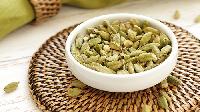
Cardamom Seeds
Cardamom is a seed pod, known since centuries for its culinary and medicinal properties. This aromatic spice is native to the evergreen rain forest of southern Indian Kerala state and grown in only a few tropical countries. Botanically, it belongs to the family of "Zingiberaceae" and consists of two genera; Elettaria and Amomum.Generally, the cardamom plant grows up to 4 meters in length in thick clumps and starts bearing its prized seed podssoon after about two years of plantation. Each pod measures about 1-2 cm in length. Both Elettaria and Amomum cardamom types feature three-sided pods with a thin, yet tough papery outer cover. Inside, tiny, deep-brown to black, aromatic seeds are arranged in vertical rows with each grain ensheathed again inside a very thin membrane.Elettaria pods are small and light green, while amomum pods are larger and dark brown. The pods are being used as flavoring base in both food and drink as well as in medicine. Black cardamom (Amomum subulatum) also known as Nepal cardamom (bari or kali elaichi in India and Nepal) is a relatively bigger sized pod of same Zingiberaceae family. They have dark brown, rough outer coat, measuring about 2-4 cm in length and 1-2 cm in diameter. The pods have camphor-like intense flavor commonly used in spicy stews in sub Himalayan plains of India, Pakistan, Nepal as well as in China.Health benefits of cardamom :This exotic spice contains many plants derived chemical compounds that are known to have been anti-oxidant, disease preventing and health promoting properties. The spicy pods contain many essential volatile oils that include pinene, sabinene, myrcene, phellandrene, limonene, 1, 8-cineole, terpinene, p-cymene, terpinolene, linalool, linalyl acetate, terpinen-4-oil, a-terpineol, a-terpineol acetate, citronellol, nerol, geraniol, methyl eugenol, and trans-nerolidol.The therapeutic properties of cardamom-oil have been found application in many traditional medicines as antiseptic, antispasmodic, carminative, digestive, diuretic, expectorant, stimulant, stomachic and tonic. Cardamom is a good source of minerals like potassium, calcium, and magnesium. 100 g pods conatin 1119 mg of this electrolyte. Potassium is an important component of cell and body fluids that helps control heart rate and blood pressure. Copper is required in the production of red blood cells.Additionally, it is also an excellent source of iron and manganese. 100 g pods contain 13.97 mg or 175% of daily-required levels of iron. Iron is required for red blood cell formation and cellular metabolism. Manganese is a co-factor for the enzyme, superoxide dismutase, a very powerful free-radical scavenger. Further, these aromatic pods are rich in many vital vitamins, including riboflavin, niacin, vitamin-C that is essential for optimum health.Selection and storage :Fresh cardamom pods as well as its powder can be available in the market year around. Both varieties of pods are readily sold in the markets. "Elettaria" pods are small and light green, while 'Amomum" pods are larger and dark brown. Fresh pods should be heavy and give sweet aroma when rubbed with the finger tips. Avoid pods that appear light and that are with surface discoloration or spots, which may feature mold (fungal infection).Medicinal use :The therapeutic properties of cardamom oil have found application in many traditional medicines as antiseptic and local anesthetic, and antioxidant in addition to play health promoting and disease preventing roles.Culinary uses :In general, cardamom seeds are one of the most sought-after ingredients in sweet and dessert preparations. The pod is split open to expose its underlying seeds either with fingers or using a small knife. The seeds are then crushed (powdered) using a pestle/mortar or hand-mill just before their addition in cooking. However, whole pods are preferred in savory dishes, which give a further punch to the recipe since their peel too contains significant amounts of valuable essential oils.Here are some preparation tips : This delicate spice is being used as flavoring agent in both foods, soups and refreshing drinks. The pods have been in use in the preparation of sweet dishes in many Asian countries. Elaichi-pista (cardamom and pistachio) kulfi is a famous summer dessert in India, Pakistan, and Iran. Elaichi kheer is another popular rice pudding with added pistachio, and raisins in these regions. It is used as a flavoring base in the preparation of tea, coffee, and cold beverages. Black cardamom (badi elaichi) is mostly preferred in savory dishes; to prepare rice-pilaf, meat stews, and lentil-curry in many parts of Nepal, India, and Pakistan.
...more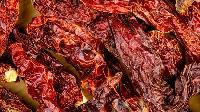
Byadgi Red Chilli
Byadgi Chili is grown in most fertile lands of Karnataka and has excellent flavor. Byadgi Chili is well known for its deep red color and is less spicy and is used in many food preparations throughout the world. It has negligible capsaicin content making it less pungent than other chili varieties. In Karnataka, Bydagi variety chilli is grown in the various districts such as Dharwad, Gadag and Haveri. Districts such as Bellary, Raichur and Gulbarga which were earlier known for producing Guntur variety are also shifting to Byadgi variety as it has higher oleoresin content with an optimal yield of 15-20 quintals per acre. Even in adjacent state Andhra Pradesh it is grown in districts of Karmool and Adhoni. Though you will be able to find trading of all other varities of red chillies at various locations across India, the Byadgi variety is available for trade only in Byadgi and nowhere else. It is famous across the industries for its superior colour and aroma whilst having less pungency. In production of pickles, masala products and chilli powder prefer such characteristics of Byadagi chilli as it allows them to bring out the best colour naturally and at the same time avoid their products being too pungent for consumption.We, INCON EXIM are one of the Leading Processors, Cultivators, and Exporters & Suppliers of Byadgi Chili. We cultivate Byadgi Chili in the most fertile lands of India & with the utilization of organic fertilizers only. Further it is processed under hygienic conditions to match international standards. We supply Byadgi Chili with stem and without stem at most competitive price.Quality control :To make sure that our all the products are 100% defect free and it should be highly aromatic & fresh we have our own in-house quality check unit. Here, each and every product is properly tested before the final delivery. In fact, the selection of raw materials is also done under the supervision of qualified professionals having vast experience of the same field.Uses of Byadgi Chili :Byadgi chili is an important ingredient used in less spicy food preparations. The aroma & pungency of Byadgi Chili is very much suitable for Indian, Chinese, American, European, Thai, and Italian & Japanese Cuisines. It is also used in meat preparations because of the bright red color that it impacts to the meat. The curry made in Byadgi Chili not only looks rich but also tastes rich. Byadgi Chili is used for extraction of oleoresin, red oil from the pods. Oleoresin is used in the preparations of nail polish, lipsticks, food, textiles, Pharmacy etc.. About 50 liters of oleoresin can be extracted from about 1 tone of chilies. Byadgi Chili is also used in making of some important Ayurvedic medicines.Health benefits of Byadgi Chilli :Byadgi Chilies are excellent source of Vitamin, A, B, C and E with minerals like molybdenum, manganese, foliate, potassium, thiamin, and copper. It is also good for slimming down as it burns the calorie easily. Byadgi Chili stimulate the appetite, help to clear the lungs, and stimulate digestive system.Our Main Market / Key Customer :We export Byadgi Chili having pungent smell & high purity to the markets of Saudi Arabia, South Africa, China, Malaysia, Thailand, Vietnam, Indonesia, Singapore, Sri Lanka, United Arabian Emirates, etc.Customer Satisfaction :We ensure maximum customer satisfaction by providing high quality products matching the client’s requirements. Our easy and hassle free delivery system involving swift logistic facilities which make us reach all over the world with in the stipulated time frame. We take at most care and are committed to provide after sales services to all our clients. Last but not the least we offer all spice products at very competitive prices.
...more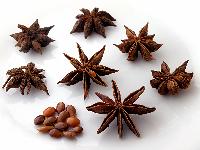
Anise Seeds
Do you suffer from gripping stomach pain? Or with cold and cough? Take a few sips of anise seed mixed in hot-water and you feel better instantly. These unique aromatic spicy seeds indeed are quite popular for their culinary and medicinal values. Anise botanically belongs to the Apiaceae family in the genus Pimpinella and known scientifically as Pimpinella anisum. The humble anise plant is native to Middle-East and Mediterranean region; probably originated on the fertile plains of Nile delta in the Egypt.Anise is a perennial herbal plant; generally, grows up to a height of about 2 feet. It bears white colored umbelliform flowers by July, and harvested by bringing down the whole plant once its seed-heads matured enough on the plant itself. Its seeds then separated from the flower heads by threshing. Anise seeds feature oblong or curved, comma shape, about 3-4 mm long, light brown color and fine stripes over its outer surface. The seeds feature delicately sweet and aromatic bouquet with a distinctive liquorice flavor. Their special fragrance is due to essential oil, anethole in them. Star anise (Illicium verum) is a spicy fruit, obtained from evergreen tree native to South-West China. It has similar flavor and taste like that of anise seed. Star-anise tree bears star-shaped fruits which turn rust-red color when ripen. Interiorly, these fruits envelope amber-colored seeds. Both the seed as well as fruit husks used as spice in cooking.Health benefits of anise : Exotic anise spice carry some of the important plants derived chemical compounds that are known to have been anti-oxidant, disease preventing, and health promoting properties. the main essential volatile oil that gives the characteristic sweet, aromatic flavor to anise seed is anethole. Other important compounds found in these seeds include estragol, p-anisaldehyde, anise alcohol, acetophenone, pinene and limonene. Anise seed oil obtained from extraction of the seeds has been found application in many traditional medicines as stomachic, anti-septic, anti-spasmodic, carminative, digestive, expectorant, stimulant and tonic agent. The seeds are an excellent source of many essential B-complex vitamins such as pyridoxine, niacin, riboflavin, and thiamin. Pyridoxine (vitamin B-6) helps increase GABA neuro-chemical levels in the brain. The spicy seeds are one of important source of minerals like calcium, iron, copper, potassium, manganese, zinc and magnesium. 100 g dry seeds contain 36.96 mg or 462% daily required levels of iron. Potassium is an important component of cell and body fluids that helps control heart rate and blood pressure. Copper is a cofactor for many vital enzymes, including cytochrome C-oxidase and superoxide dismutase (other minerals function as cofactors for this enzyme are manganese and zinc). Copper is also required in the production of red blood cells. The spice also contains good amounts of anti-oxidant vitamins such as vitamin-C and vitamin-A. Selection and storage : Dried as well as ground anise powder can be readily available in the spice market year-round. Choose anise seeds from organic herb stores for authenticity. Buy them in small quantities so that they would last for 3-4 months, since they lose their flavor because of evaporation of essential oils. Fresh seeds should feature brilliant olive-green to grey-brown color and give rich aroma when rubbed between index and thumb fingers. Avoid seeds that have broken tips or those of old stocks as they feature less in essential oils and, therefore, poor in quality. At home, store anise in airtight containers; place in cool, dark place. Powder/ground form should be kept in airtight containers and used as early as possible since it can lose its flavor rather quickly. Star anise, on the other hand, has a longer shelf life. Ground star-anise should be stored in an airtight container, away from sunlight. Medicinal use :Anise seed as well its oil found application in many traditional medicines for their distinctive health promoting and disease preventing roles. Anise preparations are an excellent remedy for asthma, bronchitis cough as well as digestive disorders such as flatulence, bloating, colicky stomach pain, nausea and indigestion. The essential oil "anethole" (anise seeds comprises 75 - 90%) has been found to have estrogenic effect. The decoction obtained from the seeds oftentimes prescribed in the nursing mothers to promote breast-milk production. Anise seed water is very helpful in relieving running nose condition in infants. Its seeds chewed after meal in India and pakistan in order to refresh post-meal breath. (Medical disclaimer). Culinary uses : Anise seeds, its oil as well as fresh young leaves used in cooking. The flavor may be heightened by gentle toasting the seeds. Its seeds impart sweet-aromatic flavor and employed in variety of savory and sweet dishes. The whole seeds, and oftentimes freshly ground powder can be added to the recipes at the last moment to limit the evaporation of essential volatile oils in them. This delicate spice is being used as flavoring base in soups, sauces, breads, cakes, biscuits and in confectionary. Popular aniseed flavor drinks include prenod, french pastis, spanish ojen etc. Anise seeds as well as its oil has been in use in the preparation of sweet dishes in many Asian countries. Its seeds also used as a flavoring base in the preparation of herbal tea; and a liquor called anisette. Star anise (bajiao) is one of the most important spices in Chinese cuisine, and indeed, is the dominant flavor in Chinese five-spice powder along with cloves, cinnamon, huajiao (Sichuan pepper) and ground fennel seeds.
...moreBe first to Rate
Rate ThisOpening Hours